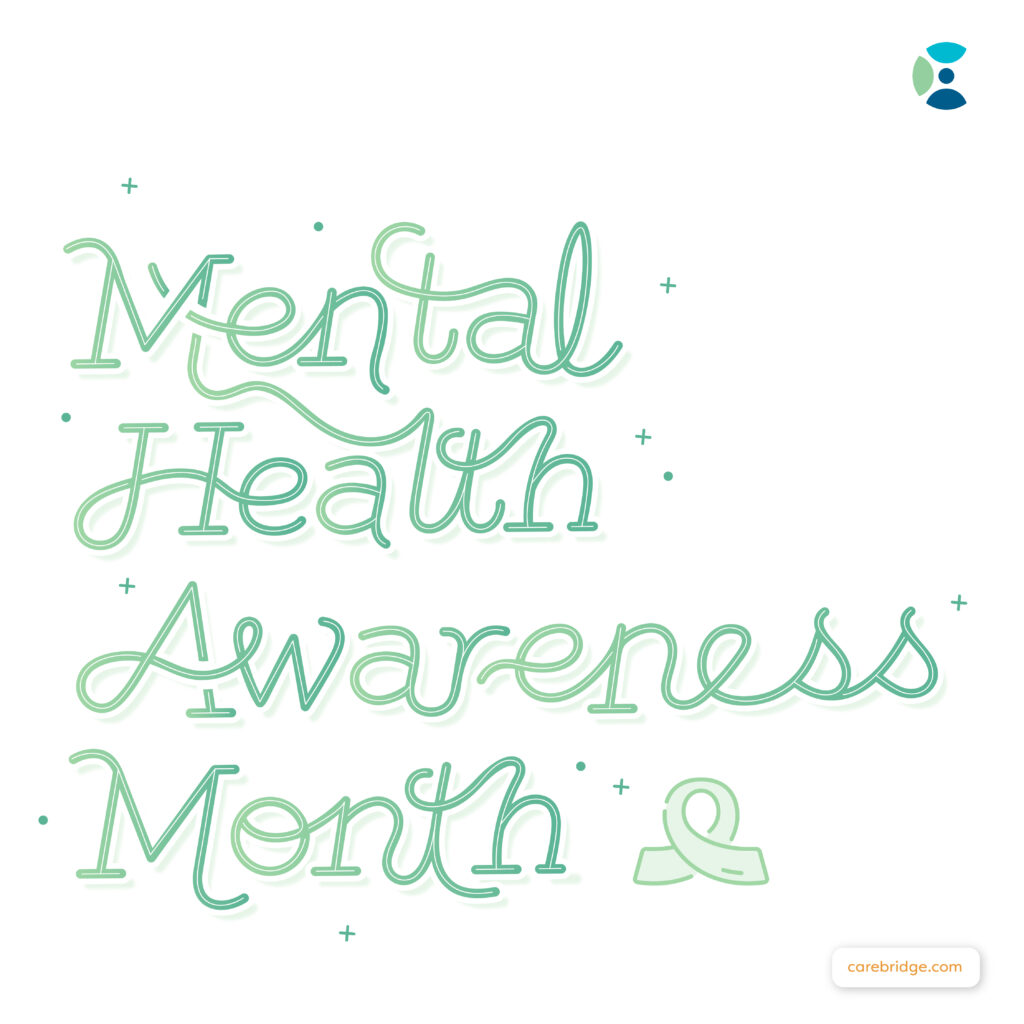Mental Health Awareness Month: Are You Doing Enough?
Mental Health Awareness Month occurs every May. Like many mental health companies and EAPs, Carebridge provides our clients with a full campaign kit to advocate the importance of mental health and promote our services. But is that enough?
Here are our top 3 tips for effectively promoting—and more importantly, supporting—mental health in your workforce.
1. Mental Health Awareness is All Year Long
A marketing principle from the early 1900s was “The Rule of 7s” where a person only needed to see an advertisement 7 times before they would consider buying the product or service. Over a hundred years later though, that number has increased exponentially along with the number of competing products and services. Now people see upwards of ten thousand ads every day! From blatant campaigns to subtle influencing—across the internet, social media, streaming services, email, TV, and outdoor billboards—there’s a lot of noise.
This is no reason to give up though! It just means more consistency and frequency is needed to break through the noise. So while a full awareness campaign for May may still have a positive impact, it takes more than one month a year to educate and persuade people on the importance of their mental health.
As an HR/Benefits Leader it may feel overwhelming with how much advertising and marketing strategy is expected of you these days. But by partnering with your wellness vendors and internal communication team, you can plan a year-round strategy that will reach your employees beyond open enrollment and Mental Health Awareness Month.
Read More: How to Increase EAP Utilization
2. Implement Notable Change
The hard truth? Promoting your employee benefits will never compensate for a toxic workplace.
If “toxic” seems like too strong of a word, consider this. A company demonstrates if they support mental health (or not) in their company policies, expected work loads, team dynamics and tolerated behaviors, manager trainings, and leadership transparency. Therefore no amount of campaign materials from your wellness vendor—no matter how good or how frequently its shared—can overcome the employee experience.
Want a more effective Mental Health Awareness Month? Designate May as the month your leadership team conducts an annual re-evaluation of company policies and procedures. Then, openly implement the changes that support the mental health and work-life balance of your employees.
Positive company changes can include:
- Removing outdated policies around PTO, work hours and location, and break times.
- Adding flexibility and support for caregivers, parents, and pet owners.
- Creating visible accountability in leadership and management roles.
- Rewriting policies to be more inclusive and equitable.
Read More: The Ultimate Guide to Improving Workplace Wellness
3. Reduce Mental Health Stigma by Elevating Employees’ Voices
While the stigma around mental health has reduced over the past 5 years, stigma continues to be the roadblock for many people seeking services. The most common reason? It’s not bad enough yet.
The good news is society has mostly accepted and made space for those who visibly struggle with mental illness. The bad news? Those with less obvious or invisible symptoms think anxiety and burnout is part of the normal human experience—so they continue to push through work and life without asking for help.
That’s why it is so impactful when a colleague steps forward and shares their personal story about getting help for their mental health. A recent study featured in Harvard Business Review, discovered that people are more likely to use their mental health benefits and resources when they learn their colleagues use them too. This is effective on a large scale in front of a group of colleagues, as well as in 1-on-1 settings.
Ways to elevate employees voices include:
- Peer-to-peer support
- Creating employee resources groups (ERGs)
- Leadership and manager trainings
- Mental Health First Aid training
- Providing a safe workspace where people feel comfortable speaking out without consequence or judgment
Read More: Help Overcommitted Employees Find Better Balance
Mental Health Awareness is a Company-Wide Commitment
Mental health awareness is not the sole responsibility of the employee. Nor is it the sole responsibility of the HR/Benefits Team. Mental health is a company-wide commitment. Working together to align company policies to your desired employees’ experience—and then choosing the wellness benefits that support those outcomes—will ensure mental health and work-life balance integrates into all aspects of your company’s culture.
If your EAP or mental health provider isn’t offering that level of company-wide strategy and engagement, connect with us to learn how Carebridge can help.
